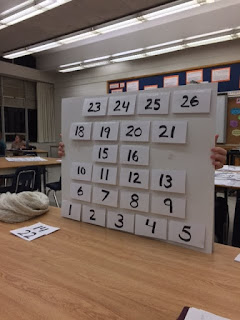The activities that were presented in this class were all extremely authentic and useful in students’ lives. Each activity was presented in an interesting way and I can imagine that students would enjoy all of these lessons. The first activity was about interest rates which is something that everyone will need to be able to calculate in the future. The second activity was about calculating the probability of getting a 21 in black jack. Although not all students will play black jack, it was an interesting way to demonstrate odds and probability within a senior level mathematics course. The last activity, which I will be focusing on in this post, was about remodelling a home.
Remodelling
Our group was handed many different types of material such as carpet samples, hardwood samples, laminate samples and paint chips. Each material had a different price attached to it which made it feel more real. We were all very excited to get started because we had never seen this activity presented in this way. As teacher candidates, we have all seen the activity where you must calculate the area of floor in a room and calculate how much the material will cost. However, we were never given manipulatives and given the opportunity to choose which materials to use. This made the activity much more realistic because you always have options when remodelling a room. I loved this activity and I plan on picking up some samples of my own to use in my future classroom. This is a great lesson that can be used in many grade levels and I hope that students will enjoy this activity as much as my group members did. The one aspect of the activity that I would change would be challenging the students to stay within a certain budget.
Our group was handed many different types of material such as carpet samples, hardwood samples, laminate samples and paint chips. Each material had a different price attached to it which made it feel more real. We were all very excited to get started because we had never seen this activity presented in this way. As teacher candidates, we have all seen the activity where you must calculate the area of floor in a room and calculate how much the material will cost. However, we were never given manipulatives and given the opportunity to choose which materials to use. This made the activity much more realistic because you always have options when remodelling a room. I loved this activity and I plan on picking up some samples of my own to use in my future classroom. This is a great lesson that can be used in many grade levels and I hope that students will enjoy this activity as much as my group members did. The one aspect of the activity that I would change would be challenging the students to stay within a certain budget.





